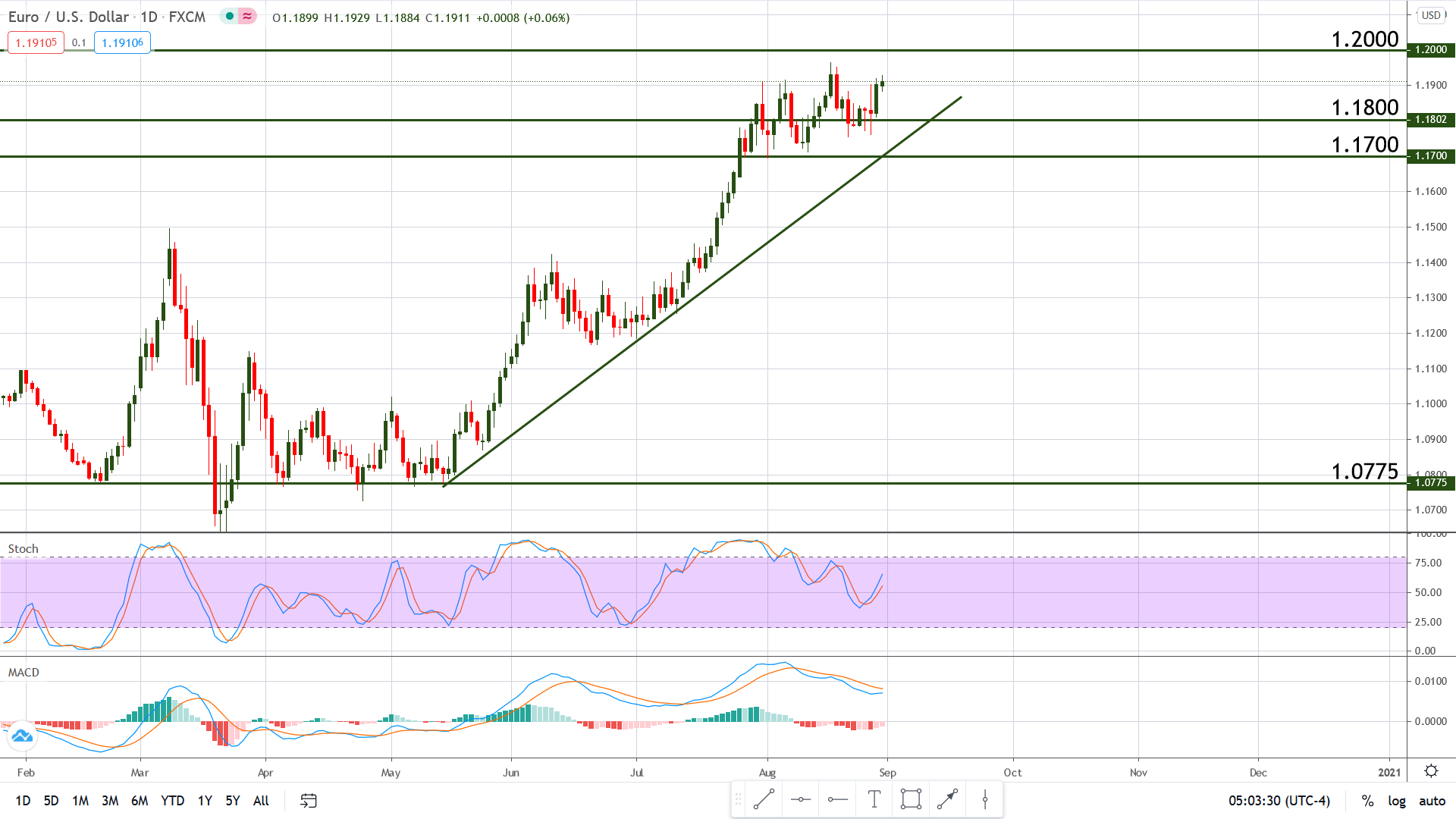Euro Testing New Highs. Is the Buck in Trouble?
guest author Bogdan Giulvezan
EUR/USD is hovering around 1.1900 after failing to break the massive psychological resistance at 1.2000. The pair has gained new traction on the back of US Dollar weakness generated by last week’s Fed announcement regarding a monetary policy shift towards the dovish side. Fed Chairman Powell green-lighted average inflation targeting, which he labeled as “flexible” inflation targeting, opening the door for other policy shifts in the near future.
The Week Ahead
The first week of September is full of major U.S. data, some of which may have a huge impact on the pair’s price behavior. Tuesday we will take a look at the ISM Manufacturing PMI, which is an index derived from the opinions of purchasing managers from the manufacturing sector. It acts as a leading indicator of economic health and it’s expected to increase from the previous 54.2 to 54.5; numbers above forecast indicate industry expansion and optimism, and usually generate US Dollar strength. The opposite applies for numbers below forecast.
Wednesday we take an early look at the U.S. employment situation with the ADP Non-Farm Employment Change. Although this is not the government-generated data, it tends to “mimic” it and it usually the estimates are relatively close. The forecast is 1250K and numbers above this number have a positive effect on the greenback.
Friday, Sept 4, the most important U.S. jobs indicator will be released: the Non-Farm Employment Change, also known as NFP (Non-Farm Payrolls). The data shows the change in the number of employed people, excluding the farming industry, and is calculated for the previous month. The expected change is 1518K and numbers above forecast show a thriving, expanding economy, as well as potential growth in retail sales (employed people spend more). All these factors have a positive effect on the US Dollar, provided of course the number surpasses expectations.
The Technical Scene
From a technical standpoint, the pair is capped by the major resistance zone around 1.2000 and is supported by the big numbers 1.1900 and 1.1800. Although new highs were printed regularly, price lacks upside momentum (as evidenced by the declining MACD among other things) and we might see an end to the recent uptrend. Of course, the important data that comes out this week will have a strong say in the matter.
If the uptrend does indeed break down, price may travel to meet the diagonal support represented by the trend line visible on the chart below but as long as that line remains intact, the pair is still in an uptrend.
